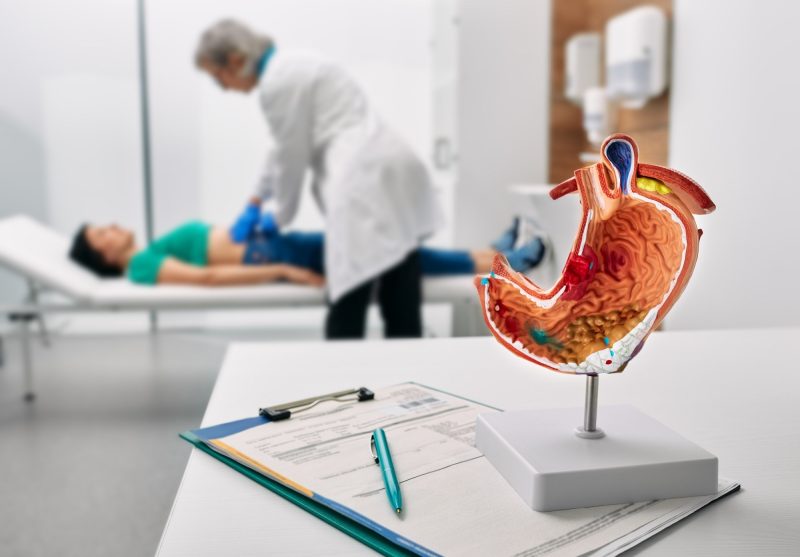Longitudinal assessment of gastrointestinal virome of mothers and infants

In a recent study published in Cell Host & Microbe, researchers comparatively assessed the gastrointestinal virome of mothers and infants.
Studies have reported that microbial structure and functions developed in the initial period of life affect the development of immunological defence mechanisms, and, probably, the outcomes of clinical diseases at later stages of life. In the intestines, viruses outnumber bacteria; however, the development of the human intestinal virome has not been well-characterized.
About the study
In the present study, researchers compared the intestinal virome among mothers and infants.
Metagenomic viral sequencing analysis was performed using fecal specimens obtained from 53 Californian infants, who were born in the period from August of 2011 to July of 2015, aged between two weeks and three years, and fecal specimens of the mothers to compare the maternal and infant intestinal virome. The sequence-based ultra-rapid pathogen identification (SURPI) pipeline was used for the analysis.
In addition, principal coordinates analysis (PCoA) analysis was performed. Alpha diversity virome and beta diversity virome of mothers and infants during their first life year were compared. Moreover, the infant virome at the third life year-end (timepoint B9) was compared with the virome at the last maternal virome sequencing timepoint (M3).
Analysis of similarities (ANOSIM) was performed to assess the similarities between the younger infants (B1, B2 and B3 time points) and the older infants (B9 timepoint) infants with the maternal virome. To detect sequence-divergent viral organisms infecting mothers and infants, the viral reads and unmatched-type reads were assembled de novo, followed by aligning the assembled viral contiguous sequences (contigs) with those uploaded in the GenBank database.
Results
A total of 454 fecal specimens from infants yielded 81 billion viral sequence reads (mean value of 178 million viral reads in every specimen) and 233 fecal specimens obtained from the mothers yielded 10 billion viral sequence reads (mean value of 42 million reads in every specimen). The infant gut virome comprised prokaryotic bacteriophages, eukaryotic viruses including human-host viruses and non-human environmental and dietary viruses.
The infant virome comprised mainly phages of the Siphoviridae and Microviridae families of viruses and host viral organisms from the Anelloviridae and Picornaviridae families. Contrastingly, the maternal gut virome largely comprised environmental and dietary viruses, including Virgaviridae viruses, and phages (Inoviridae and Microviridae families), and lacked human-host viral organisms. Previously undescribed sequence-divergent vertebrate viruses were identified in the gut virome of mothers but not in that of infants.
With increasing age, in the infant virome, the phage fraction began to show similarities with the maternal gut virome, without any changes in deoxyribonucleic acid (DNA) environmental/dietary virus abundance. Contrastingly, ribonucleic acid (RNA) viral organism counts were significantly elevated. Over three years, the abundance of phages, Microviridae species and Gokushovirus WZ-015a increased, whereas that of human viruses (especially DNA virus diversity), and parechovirus A were reduced, without any significant changes in the diversity of viruses. On the contrary, maternal specimens showed no statistically significant changes in diversity or abundance in the period.
A larger dispersion was observed from the maternal gut virome of younger vs. older infants, driven by Lactococcus phages, most likely to be acquired from breast milk. Phage clustering from the older infants and the mothers was largely driven by Microviridae species, such as poophages and gokushoviruses.
More persistent and stronger separation of human viruses was observed between the maternal and infant gut virome. The distinction was driven by parechovirus A and torque teno virus-like Anelloviridae family virus among infants and CRESS (circular rep-encoding single-stranded) virus and picobirnavirus among mothers. The tomato mosaic virus was critical in driving maternal virome clustering apart from that of the infant virome.
The viral microbiomes of infants and mothers showed elevated counts of Virgaviridae, Microviridae, crAssphage, and Siphoviridae. However, the maternal virome showed a lower abundance of Caliciviridae, Anelloviridae, Podoviridae, and Picornaviridae, compared to the infant virome. In the ANOSIM analysis, the differences in the abundance of human DNA viral organisms and RNA viral organisms between the infant virome and the maternal virome were significant.
Vibrio/Lactococcus and gokushovirus were key viruses in the induction of younger infant and older infant prokaryotic intestinal viral microbiomes, respectively. Until three years of age, the human-host viruses’ component of the infant virome continued to differ from the maternal viral microbiome, following which the infant microbiome began to resemble that of the mother.
Based on the study findings, the viral microbiome of infants differs from that of mothers till three years of life, indicating that the virome of infants is not directly acquired from their mothers but can be instead determined by infectious, environmental and dietary factors. Human-host viruses, especially picornaviruses, were more prevalent in infant intestinal viral microbiomes, whereas sequence-divergent viruses showed a greater prevalence in the maternal intestinal virome.








